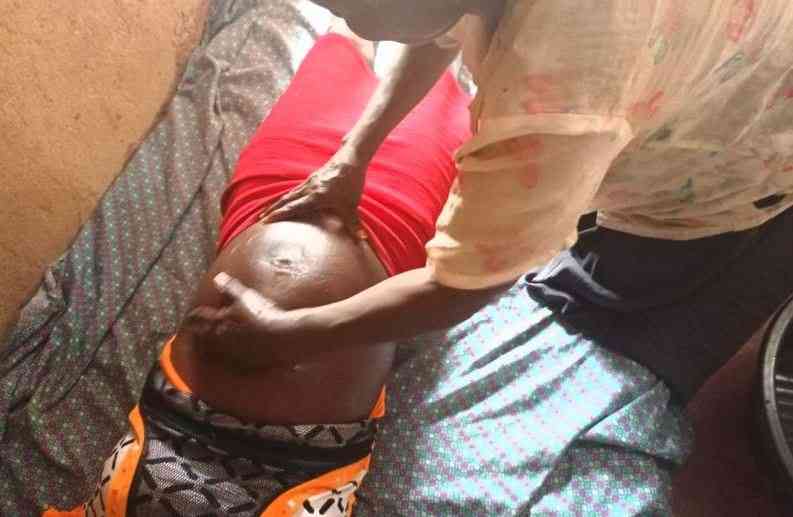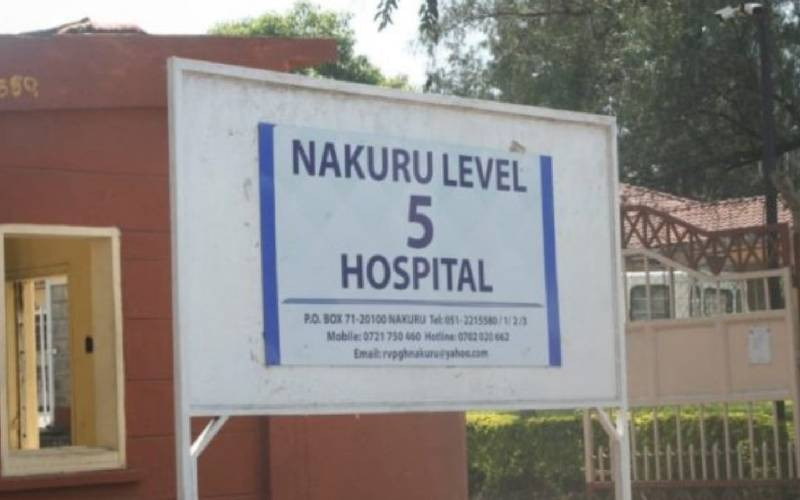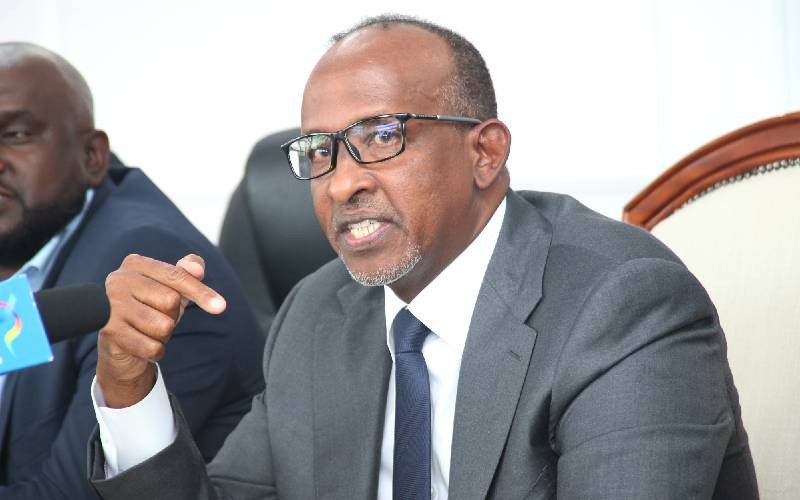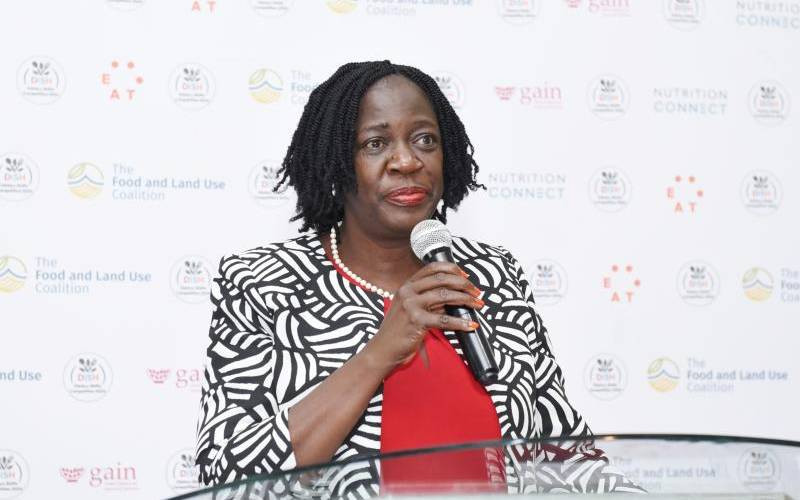
Over the past two decades, Kenya has made significant strides in improving maternal healthcare, leading to notable reductions in maternal mortality and enhanced access to quality services.
However, there are still some glaring gaps that need to be addressed if Kenya is to achieve the sustainable development target of reducing the global maternal mortality ratio to less than 70 per 100,000 live births.
Rachel Oliech, a senior nursing officer and midwife with 12 years of experience in a busy public hospital, starts her shift at 7.30 am, where she receives patients from the night shift team, and ends at 6 pm with two breaks in between the day, depending on the conditions of her patients.
“I do a care plan as I assess the status of each patient, prioritising them according to their health status. The most rewarding is conducting a normal delivery, with a good outcome; a healthy mom and healthy baby,” she explains.
According to her, the most challenging aspect of midwifery is when there are emergencies like obstructed labour, complicated delivery, delayed 2nd stage, postpartum haemorrhage, and foetal distress. The most disheartening experience for her is losing a baby or a mother during the delivery process.
Oliech says mistreatment is not common where she works. However, situations may arise when the patient is uncooperative and does not understand the risk she or the baby is in.
“For instance, we could encounter women who close their legs during a normal delivery, which can lead to loss of the baby’s life, and this may cause anxiety to the whole team,” she explains.
Oliech adds that long working hours without breaks, poor outcomes, resource scarcity, poor motivation, and low remuneration, among others, cause some healthcare providers to behave in ways that are hurtful or disrespectful to mothers. Every nurse in the labour ward has to be a trained midwife.
- Medics receive training to curb maternal mortality in rural areas
- Bringing life, facing death: Horrific tales of mothers in labour wards
- Silent killer: Postpartum bleeding still claims ten mothers every day
- Deadlier than crashes: How bleeding crisis is haunting delivery rooms
Keep Reading
“Experience is the best teacher. When you’ve been here for long, you learn that a calm midwife will always make rational decisions and will be reassuring to an anxious mother. But when there are many mothers in labour, a midwife is not able to give individualised care, and the mothers may feel neglected.”
Oliech recommends that a support system and motivation from the hospital administration are helpful, and further training, like customer care tips, can help midwives give more compassionate care.
Mary Nguru, a senior nurse at the Nairobi Hospital with over 18 years of experience as a midwife, says that many mothers in rural areas lack access to health facilities.
“You find one midwife serving over 200 women in a village. This lack of specialised care could lead to poor maternal and child health outcomes.” She adds that poor healthcare-seeking behaviour among many mothers is also a major contributing factor in maternal deaths. Other times, it’s a referral where the mother has been severely tampered with. Nguru says they may do their best to save the mother and her baby, but sometimes it is too late.
“I would encourage expectant mothers and their partners to rush to the nearest health facility whenever they feel something is off. Better to be safe than sorry.”
Traditional beliefs also influence maternal care in both public and private hospitals. In many cases, some mothers do not believe that delivering via C-section is considered a true or real birth, yet the baby’s and the mother’s lives may be in danger.
“We have also had cases where the men believe they must have sex with their wives immediately after they give birth, and this may cause tearing of the episiotomy wound or infections in the mother.”
Over the past decade, the role of doulas—non-medical professionals providing emotional, physical, and informational support during childbirth—has been gradually gaining recognition in Kenya, particularly in urban centres. While the concept remains relatively new, there is a growing awareness and integration of doula services into maternal healthcare.
Doulas in Kenya, especially in cities like Nairobi, are increasingly offering services that include prenatal education, labour support, and postpartum care. However, many expectant parents are still unfamiliar with the concept, and the idea of paying for such support is not widely accepted.
“Birth companions, including doulas, contribute significantly to maternal health by offering continuous support during labour, which can lead to improved birth experiences and outcomes. Their presence is associated with increased satisfaction and reduced stress for mothers,” says Nereah Okanga, a midwife with more than 36 years of experience in a public hospital. She has been running her midwifery consultancy firm for five years. She used to run it on a weekend basis, but now does it full time.
Nereah says that during her time, Nurses on locum who made mistakes in other wards used to be sent to the labour ward as a punishment.
“Do you think a nurse or midwife who is in the labour ward as a punishment will serve patients well? Of course not. It takes a lot of passion to be a good midwife. When you are passionate, you will be committed even if things don’t work well.”
Nereah says she saw a gap and encouraged KNH to invest in midwives. In 2016, she trained more than 40 midwives per week on how to treat mothers, right from the casualty to the postnatal ward. “The training was so good that services improved. Training is important to build their confidence and morale,” she adds.
In 1988, Nereah and her colleagues empowered traditional birth attendants in a bid to improve maternal and child health outcomes. However, they later realised that traditional birth attendants were making it a business by keeping mothers under their care, even when they knew the mother was not okay, just so they could make money.
During this period, the maternal and child mortality ratio shot up from 352 to 599 maternal deaths per 100,000 live births, according to Nereah.
“In 2000, we launched the Safe Mother Initiative, where we changed the strategy and encouraged mothers to go to their nearest hospitals for delivery. Some mothers also went through training for warning signs in pregnancy.”
According to the Kenya National Bureau of Statistics, KNBS, Kenya's Maternal Mortality Rate (MMR) decreased from 687 deaths per 100,000 live births in 1990 to 510 in 2015, reflecting a 25.8 per cent reduction over 25 years. Between 2012 and 2018, the MMR further declined from approximately 170 to 130 per 100,000 live births.
A 2023 report by UNICEF shows Kenya's maternal mortality ratio was 149 deaths per 100,000 live births. The under-five mortality rate was 41 deaths per 1,000 live births, while the infant mortality rate stood at 31 deaths per 1,000 live births.
Despite increased access, over 80% of maternal deaths are attributed to poor quality of care, highlighting the need for continued investment in healthcare infrastructure and personnel training.
Kenya's multifaceted approach—encompassing policy reforms, infrastructure development, community engagement, and data-driven strategies—has led to substantial improvements in maternal healthcare over the past 20 years. However, continued efforts are essential to address the quality of care and regional disparities to ensure equitable maternal health outcomes nationwide.
 The Standard Group Plc is a multi-media organization with investments in media
platforms spanning newspaper print
operations, television, radio broadcasting, digital and online services. The
Standard Group is recognized as a
leading multi-media house in Kenya with a key influence in matters of national
and international interest.
The Standard Group Plc is a multi-media organization with investments in media
platforms spanning newspaper print
operations, television, radio broadcasting, digital and online services. The
Standard Group is recognized as a
leading multi-media house in Kenya with a key influence in matters of national
and international interest.











